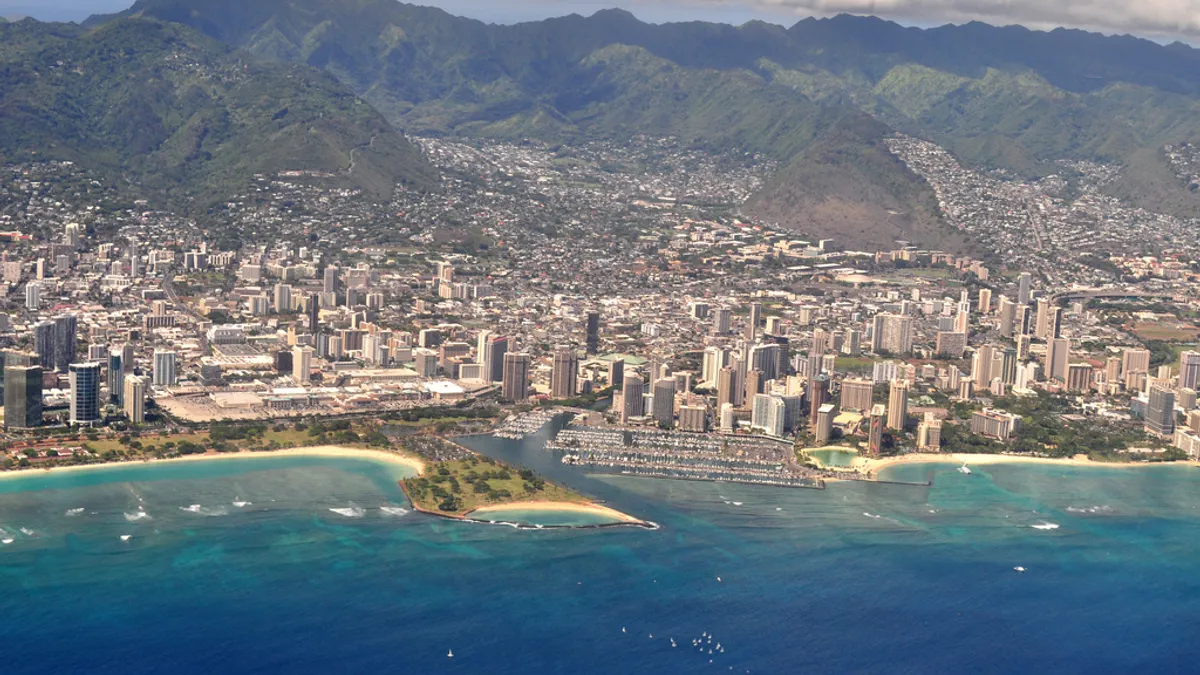Dive Brief:
- Interim Honolulu Authority for Rapid Transportation CEO Lori Kahikina has halted work on a portion of the plagued $9 billion Honolulu rail project, saying HART does not have complete design drawings, Hawaii News Now reported.
- Kahikina also said the project is $2 billion to $3 billion over budget, and she let go expensive consultants that created redundancies and inefficiencies while reviewing project expenses.
- HART will likely alter the project's guideway path to avoid utilities that would otherwise have to be moved. The new plan will require approval from landowners, including local schools and the University of Hawaii, and require buying more land.
Dive Insight:
The lack of plans created a situation where money was being spent, but no work was getting done, Kahikina said: "You need to have the complete in order to go to the city to obtain permits before you can start work, so you’re just paying a contractor to be on standby."
She added that cutting the consultants was the start of eliminating waste, saying HART needed to "tighten our belt internally." The project's operating cost is about $12 million per month, she said.
On the plus side, the new COVID-19 relief package signed by President Joe Biden earmarks $70 million to help cover losses on the rail project due to the pandemic. Declining tax revenue led the rail system to lose $62 million, according to Honolulu Civil Beat and HART is forecasting a total COVID-19-related loss of $76 million over the life of the project.
The last leg of the 20-mile Honolulu high-speed rail project was planned as a public-private partnership, although in November, HART announced the procurement process was canceled. In December, HART revealed details about the bids that made the project too expensive. The agency set the project's design and construction "affordability limit" at $1.7 billion, but received bids from City Center Connection Group and Imua Transit Honolulu for $2.8 and $2.7 billion, respectively. Bids for operations and maintenance were also above set limits.
Kahikina said she hopes to turn over part of the route's operation by year end, but it will be up to the city's Department of Transportation Services and Honolulu Mayor Rick Blangiardi to choose the exact timing.
Despite the pandemic, Hawaii construction overall remains strong, as evidenced by slight growth in construction jobs from March 2020 (an estimated 37,800) to December 2020 (an estimated 37,900). By comparison, hotel and restaurant jobs dropped from 112,200 to 70,000 in the same time period and dipped as low as 43,500 in May, according to the Honolulu Civil Beat.
Moving forward as the economy continues to rebound from the pandemic, private-sector projects are expected to contribute $10 billion in construction statewide, according to Cheryl Walthall, executive director of the General Contractors Association of Hawaii. In addition, $1.1 billion in state capital improvements are projected for the next year, along with another $1.1 billion in federal funds earmarked for transportation projects to improve and upgrade airports and harbors.
Military spending also buoys the economy in Hawaii, Walthall said, and it is the second largest contributor to the local economy, behind tourism. Roughly $2.3 billion in U.S. Department of Defense spending is allocated for Hawaii every year, and a large chunk of that ends up going to local construction companies.













